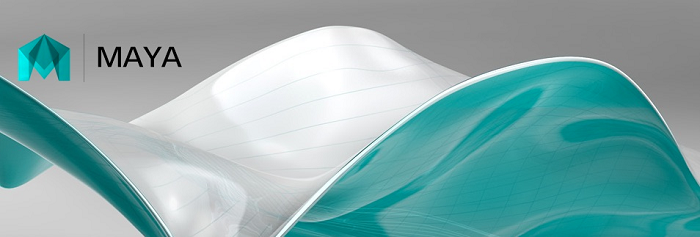
Maya – or Autodesk Maya as it’s now officially known as – has had quite the interesting path in the 3D software industry. Filled with a background of mergers, it serves as a great example of why 3D artists always need to keep up to date with their ever-evolving work environment. Known for being a top tier animation competitor in the film industry, here’s what aspiring 3D animators need to know about Maya.
I remember the cold, October day well. It was 2005, when I was still a few years away from completing my 3D art college degree. I was in yet another 8:00 AM class that felt so dreadfully early that I was convinced nothing could cure my body of lethargy. Then news hit that Autodesk – the company who owned 3D Studio Max, the software we’d been learning for the past year – planned to acquire Alias – the company responsible for 3ds Max’s lead competitor in the software war, Maya – and that our school’s curriculum and courses would need to be changed before the next semester began.
The main rumor was that Maya, which had a hand in the game market and other mediums beyond their main movie market, would now move forward as just a software package for the film industry, with Autodesk’s 3D Studio Max free to enjoy the main spotlight of the videogame development industry. Years later, this certainly hasn’t become the black and white issue many expected, with various well known game companies still using Maya to this day. Since then, plenty of new 3D software names have emerged, proving Autodesk is nowhere near having a monopoly on the market, but Maya definitely remains well known for its ties with 3D animation in film.
It’s a textbook example of why the golden rule in the 3D art industry is that knowing the program itself isn’t more important thing than knowing the actual animation principles as an artist. All 3D software should be viewed as nothing more than a different tool to help you get the same job done, with many programs being perfectly acceptable. It’s fun to try them all and figure out which one you like best to prepare for the fact that different employers use different software, so it’s likely that over the course of your career you’ll be asked to learn a few different programs. Here are some of the best things Autodesk Maya has to offer for animators.
Key Frame Timeline
Much like 3ds Max and all other 3D animation software, the key frame timeline is the basic foundation that the entire program revolves around. By locking in an object’s X, Y, and/or Z coordinates at one frame, then moving the object and repeating the process at a different point in the timeline, the program does the hard part of connecting the scene’s gap with “tween” animation. Even though its functionality is simple, the icons and locations of both buttons and sidebar measurement options may be in different places on the screen than the software you’re used to, so be more concerned with exploring at first than actually learning any of the following features.
Autodesk Maya Features
Over the years, Maya has had several useful animation features added to its list of professional perks. A realistic fluid simulator has been included in the software since late 2002, with separate cloth simulation also being present for several past versions. In recent years, “nCloth” and “nParticle” have also been added to Maya Nucleus, which is Autodesk’s simulation framework. While nCloth offers more degrees of control for animators of flowing scene objects, nParticle continually introduces and updates liquid and gas effects to allow a wide range of realistic atmospheric effects.
Fur and hair are both basic animation simulators that have been present for quite a while, but new features were introduced last year in Maya 2010, such as a Composite, which was earlier sold as Autodesk’s film composition software, Toxik. Also added in Maya 2010 was MatchMover, which enables the compositing of CGI renders with motion data from film sequences. A nice feature that’s received much use since its appearance in 2009 has been the Camera Sequencer, which lets users layout multiple camera shots and manage them all within a single piece of animation. Sometimes the most basic features are the ones that help your company stay efficient, but Maya also has an advanced feature as well: Maya Live’s motion tracking tools. Assets like this allow much more ambitious projects to be accomplished.
Many feel that Maya excels at animation while being hindered in modeling or lighting areas, which may be reassuring for potential animators, but it all comes down to personal preference and what your company chooses. Despite its heavy film industry leanings, Maya continues to be used at many videogame design studios around the globe to this day, so it’s very possible animators from all walks of like may be asked to learn Maya one day.

